|
When I was sailing on the NOAA Ship Rainier, we had no shortage of open houses and tours for everyone from Congressional staffers to local kindergarten classes. Giving tours of the ship, I got sick of drawing the analogy that the ship was “like a small floating city and was completely self-sufficient; producing its own power and fresh water, and treating its own sewage.” Never the less, it’s true and is equally true, though on a smaller scale, on a houseboat like Serenity. I’ve already address the electrical systems, so, as you may have guessed, this post is going to detail the plumbing systems. While the ship had water makers that turned sea water into fresh through evaporation and had a full MSD (Marine Sanitation Device) system that treated our waste water for discharge into the ocean, houseboats usually have far simpler systems. Generally you will find tanks on either end; potable water tanks to carry your fresh water supply and black-/gray-water holding tanks to carry waste until it can be pumped out. There are some houseboats that have water makers (usually reverse osmosis), but a majority are like Serenity and just have potable water tanks for your drinking water supply. The Serenity is somewhat unique in her fresh water configuration; supposedly the original owner liked to take long, fresh water showers and ordered it from Sumerset with five 80-gallon fresh water tanks, for a total of 400-gallons of potable water. The tanks are interconnected to act as one tank; connected via the fill lines and vent lines at the top and the supply lines to the pump at the bottom. With so much potable water, they made the unusual decision to not have a lake water system. Every other houseboat that I have experience with has a separate system run to the sinks and shower that is supplied by drawing water directly from the lake. That way you can use the lake water for all your non-potable applications and conserve the potable water. Aside from the fact that you are pumping your water from these tanks, the houseboat’s water supply lines are virtually identical to those you would find in a home…or more precisely, a mobile home. All the piping on the houseboat was gray polybutylene (PB), which was widely used in stick built homes, but was even more common in the mobile home industry. For anyone that knows plumbing, they’re probably cringing right now. PB was the precursor to the PEX lines that are commonly seen today, but was plagued with installation problems, connector failures, material degradation, and other issues leading to catastrophic failure. It was manufactured from the 1970s through the mid-90s, but was phased out amid lawsuits regarding homes damaged by water leaks and the rewriting of plumbing codes to eliminate its use. There are any number of problems, particularly with early installations. Issues mainly had to do with the fittings (the acetyl plastic and aluminum crimp fittings were the most common source of failure), but also due to micro-fractures in the pipes that resulted from excessive UV exposure or chemicals in the water. Many would have gone the route of completely re-piping, but unlike a house, I think that replacing the pipes as needed is more reasonable. Luckily, the fittings on Serenity were all compression fittings, which did not display the same issues found in the crimp fittings and have proven reliable. The PB piping itself has also held up very well and shows no sign of deterioration (inside or outside the pipe). In a house, if a PB pipe failed, you would likely be looking at tens of thousands of dollars of damage; you might not be home when the leak occurred and thousands of gallons of water could be unleashed into your home, damaging drywall, dropping ceilings, and doing other major damage. Unlike a house, the houseboat’s water system should only be pressurized when someone is aboard, so a catastrophic failure should be noticed, and the water would drain relatively harmlessly into the bilge, where it could be pumped out without causing nearly as much damage as in a house. If the pipes were in good condition, I left them as they were. However, anywhere that I needed to do plumbing work, I swapped them out for PEX lines, using the specialized crimp adapter to convert from PB to PEX. As future work is done, I expect all the PB pipes will be swapped out to PEX eventually. We will just need to monitor the system to make sure it doesn’t have any issues. The system itself is fairly simple. As illustrated below, there is a fill point on the starboard side of the houseboat, which will pressurize the potable water system or will fill the five potable water tanks if you open the valve inside the hatch just aft of the helm station. Once the tanks are filled, you can pressurize the potable water system with the pump, which needed replaced with all the other electronic components. In pervious boats and my parent’s campers I was accustomed to the buzzing rattle of the pump, but to my pleasant surprise, the pump I put on Serenity (a SHURflo 12-V, 3-GPM, 55-psi self-priming diaphragm pump) is virtually silent. From the salon, directly over where the pump is mounted, you hear nothing when it is running and you get a consistent, steady stream of water from any of the taps. When utilizing the on board water supply, the water is pumped through a UV filtration system before it ends up at the faucet. The UV filtration system, “The Water Fixer,” was installed prior to my taking ownership of the boat, but I did get the fun of completely rebuilding it. I purchased new filter housings, new ballast and electronics, new bulb, new quartz tube, and rebuilt the stainless steel housing for the UV tube. There is a two stage particulate filtration (standard mesh filter and charcoal filter) before the water passes through the UV chamber, where any living microorganisms that managed to make it through the filters should meet their fate. The water aboard Serenity should taste as fresh as if it had come from a mountain spring. From the filter, the water goes to the individual fixtures as the cold water supply and also runs to the hot-water heater. The water heater, of course, needed to be replaced; I went with a 10-gallon Reliance 120-V hot-water heater that was a pretty straight forward swap out. Then the hot water is run to the individual fixtures, just like in a house. As shown in the above diagram. As far as waste water, Serenity is old enough that she was built with no gray water tanks and instead discharges gray water from the sinks and shower directly overboard. Other than plumbing in the new sink drains, the gray-water discharge didn’t need any work. The drain from the shower and sinks just run via standard PVC drain pipes to a stand pipe towards the stern and is discharged overboard. Serenity does have three 80-galon holding tanks for black-water from the two marine heads. It is a mystery to me, with all the room in this hull to position the holding tanks, why they didn’t do drop heads. Drop heads are far cheaper and simpler with less likelihood of failure, but instead they have two marine heads. The heads are Raritan Atlantes 12-V macerating heads, which I got to rebuild (no end to the fun of fixing up this houseboat). I contacted Raritan Engineering and got all the replacement parts to upgrade them to the current models (A8), which basically replaced all the internal components on the porcelain bowls. Each head has an electrical switch attached to the flush handle; that switch actuates either the macerator pump that removes water and other…waste…from the bowl and pumps it to the holding tanks, or the supply pump that feeds water into the bowl. While I did say earlier that the Serenity did not have a lake water system, I suppose that statement isn’t strictly true as both heads have dedicate supply pumps that draw lake water from seacocks. These are the only points, aside from engine cooling water, where Serenity pulls lake water aboard. I’m glad that I didn’t have to deal with multiple lake water systems, mainly due to my concern with the Quagga mussels that have recently been moving into the north end of Lake Powell. However, this still leaves me to worry about the potential damage they might do the black-water system and I have spent far too much time researching potential solutions. I haven’t found anything definitive on whether these mussels will cause problems in the black-water system, but it stands to reason that since they are a concern in waste water treatment plants that you might see similar issues in your houseboat’s black-water system. I considered several different options for preventing this theoretical damage and have found that there is a dearth of information on actual implications of these invasive mussels on boat systems and on appropriate and effective countermeasures. Chlorine and other chemical sterilization is proven to kill the mussel veligers. However, like most houseboats, Serenity is using an enzyme based toilet treatment and chlorine would kill off those desirable enzymes. Additionally, adding chemicals to the toilet to kill off the veligers wouldn’t really protect the pump or supply lines. If chemically killing the critters wasn’t an option, then I thought the next logical method would be to irradiate them. Serenity already has the UV filtration set up on the potable water, and I didn’t think it would be too difficult to add a UV sterilization chamber onto each of the supply lines, which would have no impact on flow rate. UV Sterilizers use short wavelength UV light to kill microorganisms on a genetic level; damaging their DNA so that they cannot perform basic, vital cellular functions. I just wasn’t sure that this would be completely effective on the mussel veligers. I only found one study on the efficacy of UV light at killing Quagga mussel veligers (note the link to the study now just redirects to the home page of the Aquatic Invasive Species Network, it appears they have taken down the study). This report looked at the effectiveness of single and multiple treatments though a UV sterilizer at killing Quagga mussel veligers. I didn’t think the conclusions were well supported by the data (they advocated multiple treatments with the UV sterilizer, even though after 96-hours 1-treatment has greater than 90% mortality rate, which was statistically the same as the multiple treatment runs) and I would have liked to have seen more definitive testing (they only looked at the mobility of the veligers in the sample up to 96-hours after treatment to determine mortality; I would have liked to have placed the samples into an ideal growth environment to see if any of the UV treated veliger samples would produce mussels) and a larger sample size (if I recall correctly, they only ran one sample for each treatment level). I briefly toyed with the idea of getting some water with veligers from Lake Powell and conducting my own experiments, but decided that 1) that would be a lot of work and 2) I’m pretty sure that knowingly transporting an invasive species across stateliness is probably against the law. I didn’t have my definitive answer, but I thought that it looked good and was about to start calling UV sterilizer manufacturers. Before I got to that, I posed the question on the Wayne’s Words Message board, figuring that I couldn’t have been the first person to deal with this issue. No one had considered this for combating potential mussel infestation, but UV sterilizers and filtration systems weren’t a foreign concept (mostly on potable water systems). One member had an issue with sediment getting picked up into his black-water system and had success with a standard canister filter system on the lake pick-ups. I had dismissed a traditional filter because I was worried about providing sufficient flow rate to the heads, which require at least 3-GPM, but he said he was using 5-micron filters in his system and had no such issues. In fact, he only changed the filter once a year. It may not be as high tech as irradiating the little buggers with UV light, but it should be completely effective (a 5-micron filter isn’t going to let any of the 70-micron or larger veligers through) and it was much cheaper. I decided to go ahead with installing high flow rate filtration systems. I purchase two 10-in filter canisters with 5-micron filters (rated at 5-GPM), which should have no issues removing the veligers. I’m hopeful that we will see similar results and not need to change the filters until the beginning of next year. Thus far, it seems to be working great with plenty of flow rate to both heads. It gives me one less thing to worry about; now I just wish there were a way to protect the engine cooling systems.
Until next time, here’s wishing you fair winds and following seas.
2 Comments
8/14/2017 03:32:03
Hiring a great plumber is very important for any residential or commercial job. We have all heard about the horror stories as well as the great recommendations about local plumbers. Take the time to learn some great tips on finding the best plumber in your area.
Reply
Leave a Reply. |
AuthorBrent Pounds has over a decade of experience in the maritime industry and has been involved in recreations boating since he was a child. See the About section for more detailed information. Archives
October 2016
Categories
All
|
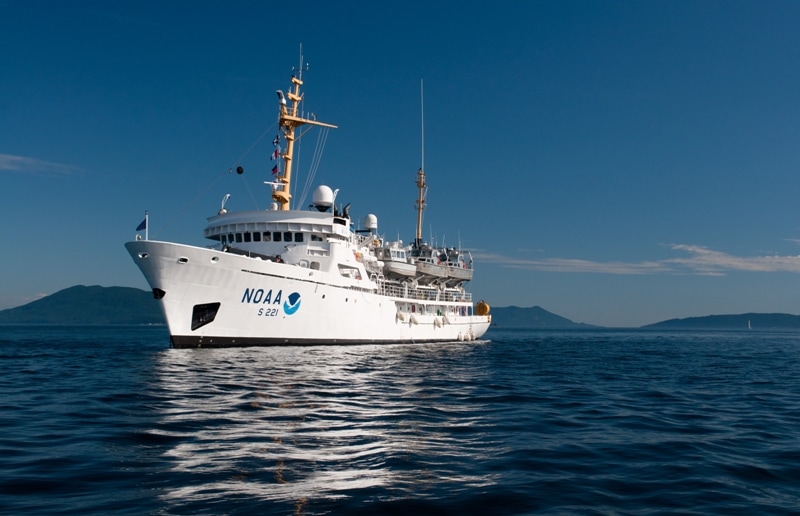
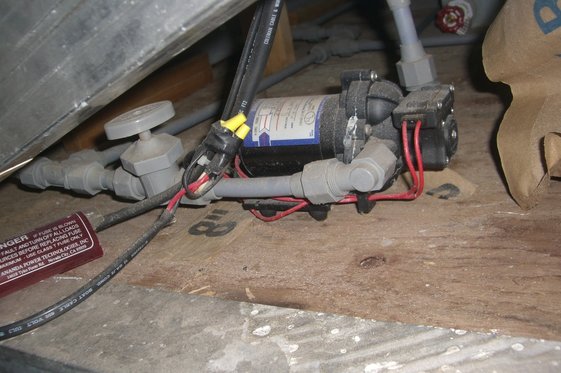
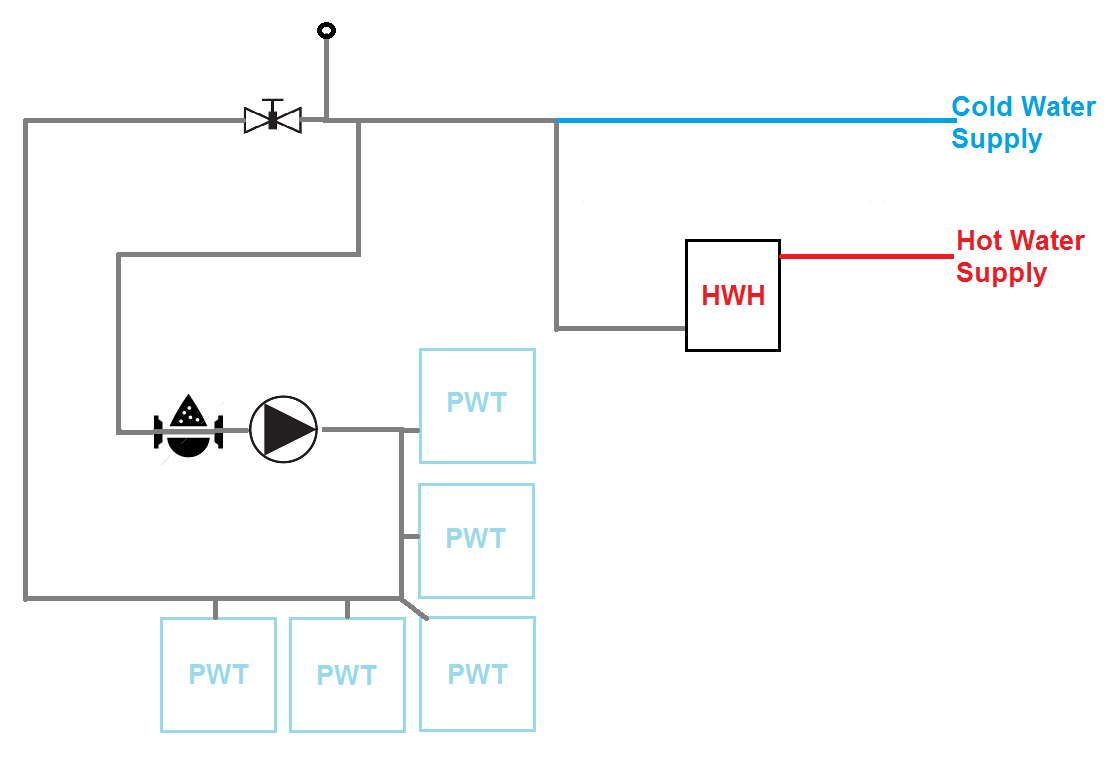
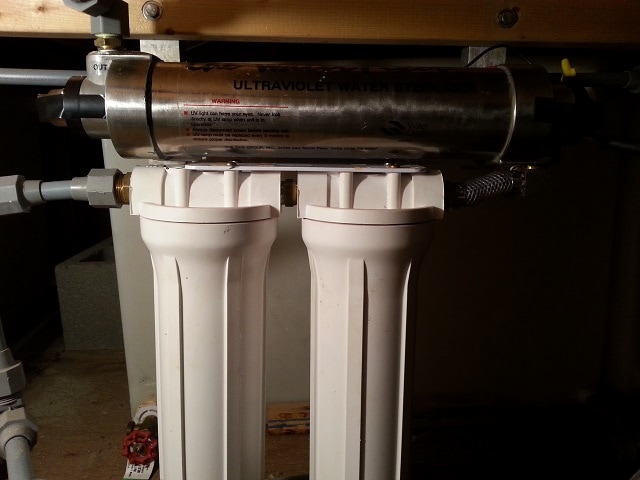
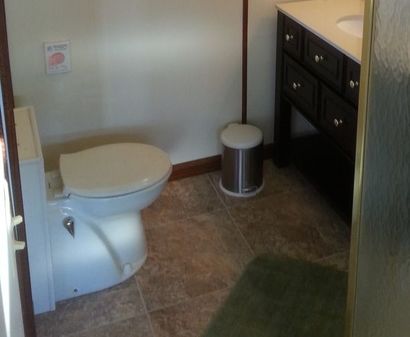
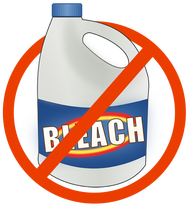
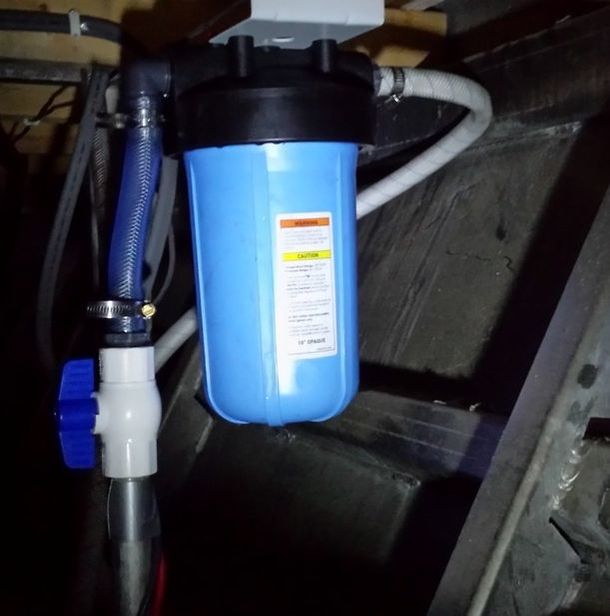
 RSS Feed
RSS Feed